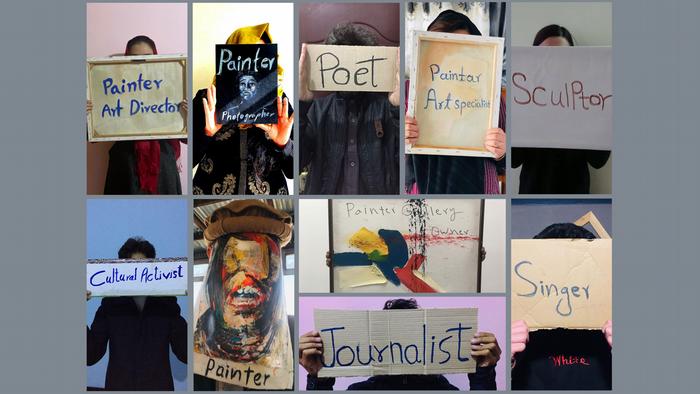The Taliban regard the arts as “haram” — forbidden. Many cases of persecution or killing of artists as well as the destruction of cultural assets are documented from their previous rule.
Following the announcement of the withdrawal of Western troops, various people and organizations called on governments around the world to act to protect Afghan artists.
One of them is Artists at Risk (AR). Since 2013, the independent aid organization has been helping endangered artists from various countries to get to places of refuge.
In Germany, Artists at Risk cooperates with the Center for Art and Media (Zentrum für Kunst und Medien, ZKM) in Karlsruhe, among others.
The organization had submitted a list of names of Afghan to be protected on September 1, before the withdrawal of the US and NATO troops, AR initiator Ivor Stodolsky told DW. But hardly anything happened after that, added Marita Muukkonen, who runs Artists at Risk together with Stodolsky.
Hoping to protect threatened Afghan artists, the organization has appealed to several governments — including those of Germany, the US, France and the EU.
“While the number of applications from artists is steadily increasing, the European governments have not been acting much,” says Muukkonen.
Their list meanwhile counts 400 names of artists whose profiles have been checked and confirmed by the organization; adding their family members, AR’s list adds up to 2,000 people. Through information compiled by two other aid organizations working closely with Artists at Risk, the number of names of people to be protected actually doubles.
Could Germany’s change of government lead to help for artists?
France has at least issued some visas, reports Ivor Stodolsky, who however decries that no decisive action has been taken in Germany. “And the Nordic countries have so far hardly done anything for artists either,” he adds.
In Germany, the Ministry of the Interior would be responsible for issuing visas for the artists. But nothing has changed since September, according to Artists at Risk. With the change of government in December, the ministry, long run by the Conservative Horst Seehofer, is now led by Social Democrat Nancy Faeser.
“We hope that something will finally happen,” say Muukkonen and Stodolsky.
Contacted by DW, the Federal Ministry of the Interior says they are currently examining the situation.
Preserving threatened culture
Meanwhile, more and more Afghan artists are receiving death threats, are living underground or hiding their works, or even destroying them. Some of them are attempting to flee the country across national borders on their own — only to end up in third countries that are also unsafe.
“We are also working with emergency funds to support the people there,” reports Muukkonen. “But that’s not a real solution; they have to obtain asylum on humanitarian grounds.”
The aid organization Artists at Risk not only aims to save human lives — it also wants to secure cultural and artistic practices.
“Those affected often return when the country is safe again,” points out Muukkonen, which means that protecting artists contributes to the preservation of culture in their home countries.
For example, the Syrian photographer and filmmaker Issa Touma returned to Aleppo after a Safe Haven residence; he is now playing a key role in the reconstruction of his country’s cultural landscape.
The artistic director of the ZKM in Karlsruhe, Peter Weibel, recently announced two residencies for artists identified by AR. Politicians have to act, said Weibel.
Several cultural institutions have agreed to contribute financially or by offering accommodation and work spaces, says Stodolsky.
Many artists are also showing solidarity with the campaign, using the hashtag #SaveAfghanArtists.
“Despite the efforts of many cultural organizations, international governments have failed to recognize Afghan cultural workers as systematically endangered,” stresses Muukkonen. That must now change quickly.
This article was originally written in German.
Hundreds of Afghan artists need protection
Source: Pinoy Pop News

0 Comments